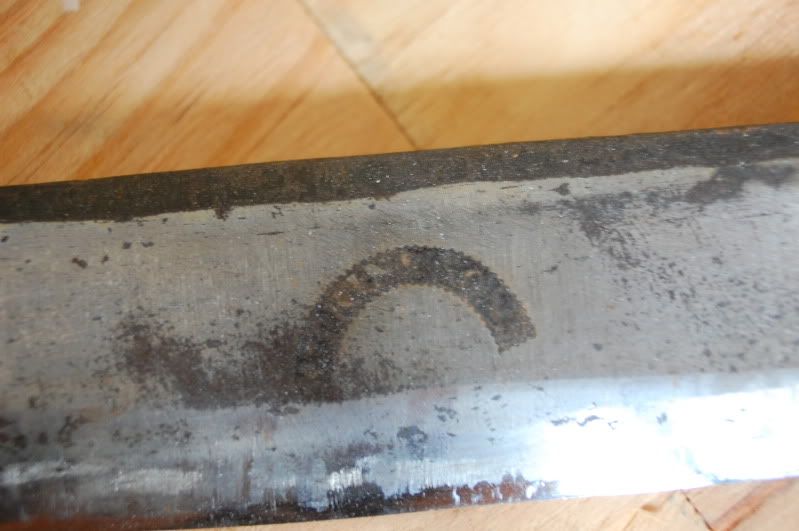Hello
I inherited from my grandfather a 1" firmer carrying the mark Burys &Co. I have reasons to be sure it dates from before 1950, but don't know how much before that.
The handle has a no. 3 stamped on it, I suppose this has to do with some sort of classing system (by size, type or whatever), but I could find no usual numbering system for flat chisels, only for for gauges and woodcarving tools.
The handle is cracked, so I don't dare hammering it (should I say "malleting"?...) - which, for the kinds of work I use it to, isn't really a problem.
Pretty hard steel it seems.
Search as I might, I could only find a company by the name Burys & Co., from Regent Works, Sheffield, which seems to have been active from 1850 to 1919. Their original production seems to have been files, but later they manufactured also edge tools. However, none of their trademarks that I could find appears on this chisel. The only mark it carries is the inscription shown in the picture below, which was probably made during the forging process.
Does anyone know if there was any other chisel maker by the name Burys & Co., or was this probably the same? And if it was the same, why the uncommon (or so it seems to me) trademark? What might the meaning of the no. 3 be?
Should I try repairing the handle, or would that be sacrilege? As far as I am concerned, it is a working chisel, but not for hard work in its present state. If I am to repair it, what would the best method to use? The crack is quite thin, and I am afraid that trying to insert a wedge would only widen it. Or, woulld it be best if I leave it as it is?
Thanks
I inherited from my grandfather a 1" firmer carrying the mark Burys &Co. I have reasons to be sure it dates from before 1950, but don't know how much before that.
The handle has a no. 3 stamped on it, I suppose this has to do with some sort of classing system (by size, type or whatever), but I could find no usual numbering system for flat chisels, only for for gauges and woodcarving tools.
The handle is cracked, so I don't dare hammering it (should I say "malleting"?...) - which, for the kinds of work I use it to, isn't really a problem.
Pretty hard steel it seems.
Search as I might, I could only find a company by the name Burys & Co., from Regent Works, Sheffield, which seems to have been active from 1850 to 1919. Their original production seems to have been files, but later they manufactured also edge tools. However, none of their trademarks that I could find appears on this chisel. The only mark it carries is the inscription shown in the picture below, which was probably made during the forging process.
Does anyone know if there was any other chisel maker by the name Burys & Co., or was this probably the same? And if it was the same, why the uncommon (or so it seems to me) trademark? What might the meaning of the no. 3 be?
Should I try repairing the handle, or would that be sacrilege? As far as I am concerned, it is a working chisel, but not for hard work in its present state. If I am to repair it, what would the best method to use? The crack is quite thin, and I am afraid that trying to insert a wedge would only widen it. Or, woulld it be best if I leave it as it is?
Thanks










